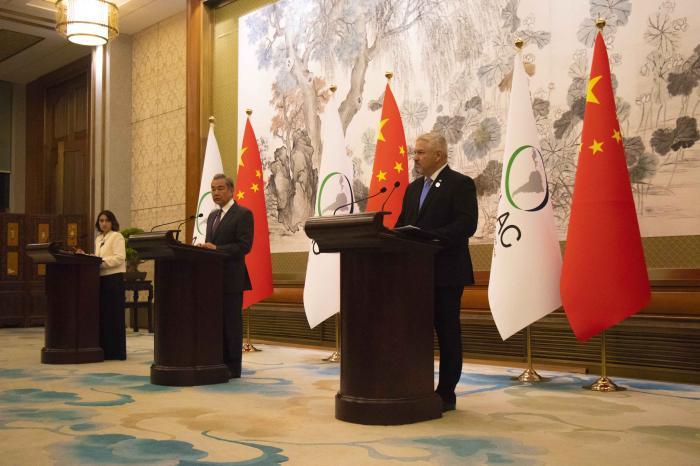
The 4th Ministerial Meeting of the China-Celac Forum, which took place last Tuesday in Beijing, concluded with a certainty: Latin America and China have created a new map based on cooperation for development.
What has been the path that has led to these transformations in infrastructure, trade, cultural exchange, to give just a few examples?
As Latin American countries have sought to diversify their global relations, collaboration with the Asian country has become fundamental for sustainable progress.
The ties have been facilitated by China's support for multilateralism and the system of international organizations, essential for the design and implementation of strategies aimed at progress.
This is how President Xi Jinping described it ten years ago: "The China-Celac Forum is a novelty. For this seedling to grow into a lush tree, it is essential for both sides to take good care of it".
The results confirm that the tree has grown, leading to the emergence and consolidation of multiple projects. The Belt and Road initiative has been one of the most visible. More than twenty countries in the region are part of this platform and ten have signed specific collaboration plans with the Asian giant.
Bridging the existing gap, China has become the second largest trading partner of Latin America and the Caribbean, and the largest trading partner of Brazil, Chile, Peru and Uruguay, among others.
The concept of building a community of shared future for humanity has been a cornerstone for these new realities of Sino-Latin American cooperation.
FROM 65 YEARS OF DIPLOMATIC RELATIONS TO A SHARED FUTURE
Cuba and China celebrate 65 years of diplomatic relations in 2025. The commemoration has provided context and greater motivation for strengthening ties.
Joint programs in biotechnology, investments in renewable energy, and strengthening educational and cultural exchange are examples of how the principles of mutual benefit and the work to achieve the consensus reached between Presidents Miguel Díaz-Canel Bermúdez and Xi Jinping have materialized.
Last Monday, the foreign ministers of both countries, Bruno Rodriguez and Wang Yi, highlighted the friendship of the two nations and expressed the intention to continue working to achieve new goals. At that meeting, the ties were described as a model of solidarity and mutual assistance for developing countries.
The successful holding of the fourth ministerial meeting has contributed to defining new horizons. This is confirmed by the approval of the Beijing Declaration and the Celac-China Joint Action Plan for Cooperation in Key Areas.
In the presentation of the consensus reached during the Forum, Wang Yi, accompanied by Laura Sarabia and Enrique Reina, foreign ministers of Colombia and Honduras, respectively, affirmed that the Asian country and the region foresee favorable prospects for cooperation, and reaffirmed that China will share the opportunities derived from the modernization and high-level opening up it is carrying out.
It is a scenario that will allow further growth of the symbolic tree planted a decade ago and will promote the transformation of existing maps, to the benefit of Sino-Latin America and creating new possibilities for the global community.








